Hashtagging in advertising texts of international glossy magazines
This article deals with the peculiarities of the hashtagging process and the functioning of hashtags in print advertising. The importance of the research is explained by the linguists’ interest to the problem of the composition of a creolized advertising text, verbal and non-verbal means of expressing explicit and implicit meanings as well as units of linguistic compression. Important for the representativeness of the topic is the lack of knowledge of the specifics of the hashtagging process, types and functions of specific hashtags in creolized advertising texts. The sources of the study included Russian editions of international magazines published in 2019-2022: Tatler, Elle Decoration, Cosmopolitan, Men’s Health, Elle, Esquire, GQ, etc. To interpret the factual material, communicative-pragmatic and descriptive methods as well as the method of quantitative analysis were applied. The results of the study show that hashtags function predominantly in additive and image-centric types of creolized texts where the iconic component plays a leading role. They occupy a strong position in the composition of such texts and often functionally get closer to slogans. It is noted that the hashtags of advertising discourse of glossy publications are not distinguished by thematic diversity and represent three groups: “Clothing, footwear, accessories of premium class”, “Perfume and cosmetic products of global brands”, “Jewelry and watches of famous brands”. It was found that the hashtagging process in the analyzed texts has a number of specific features. Such features include the use of one-, two- and three-component hashtags, optional underlining, the dominance of hashtags in Latin rather than Cyrillic in the graphics, the rarity of language mixing, the activity of hashtags-phrases and hashtags-sentences. The author concludes that hashtags in the advertising communication of international magazines are distinguished by functional differentiation and multifunctionality.
Figures
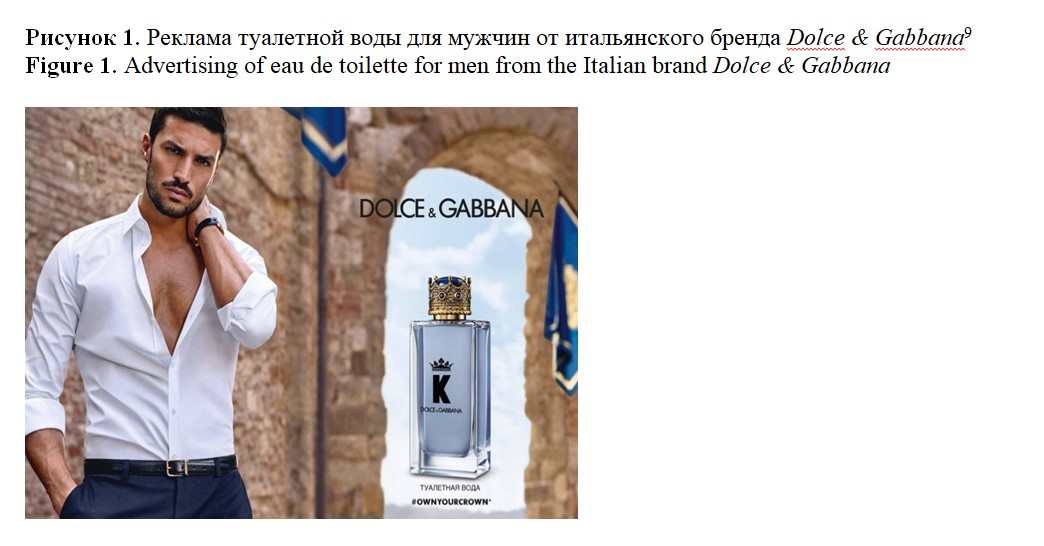
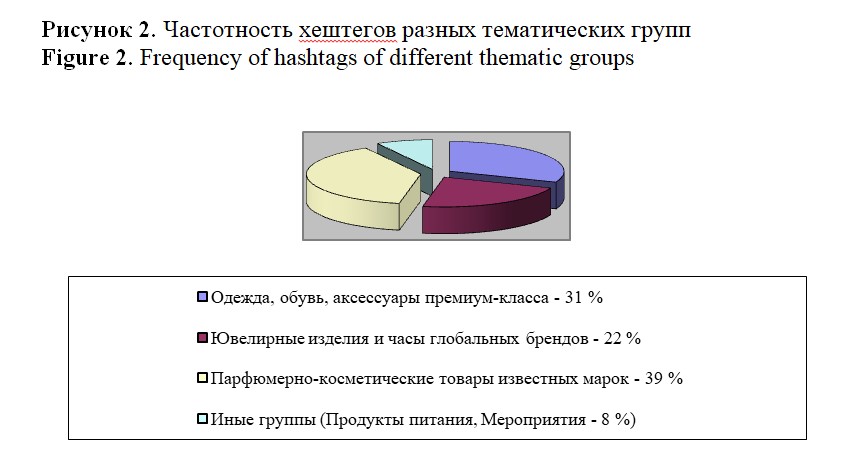
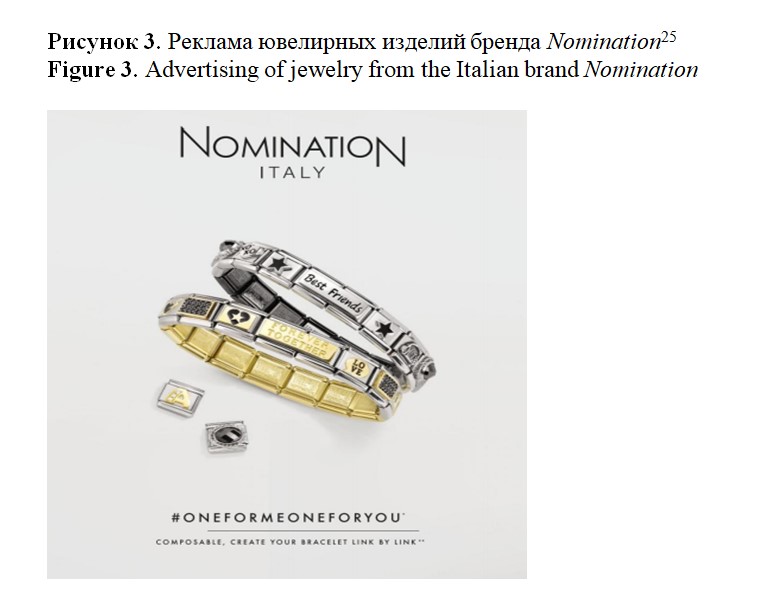
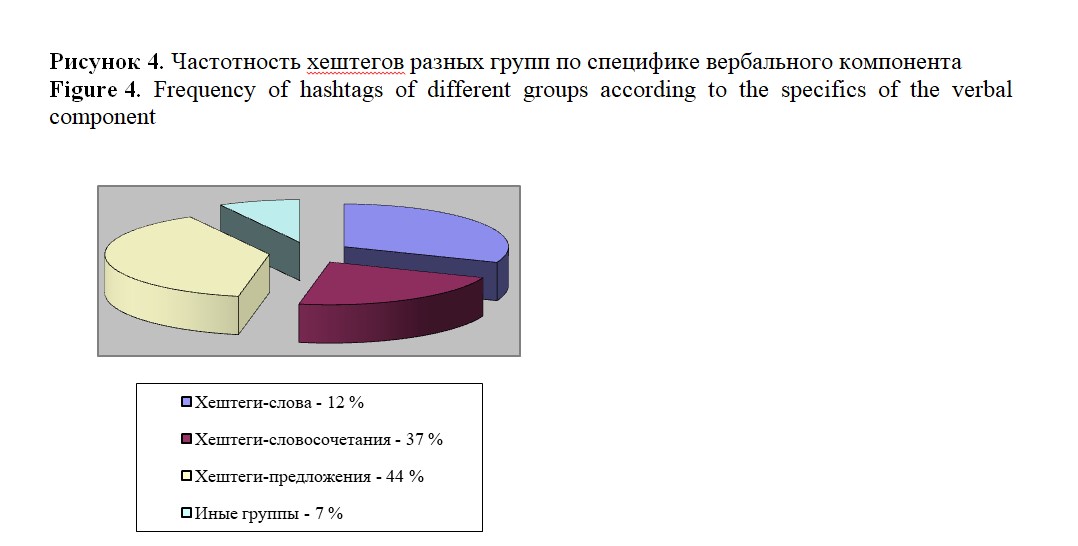
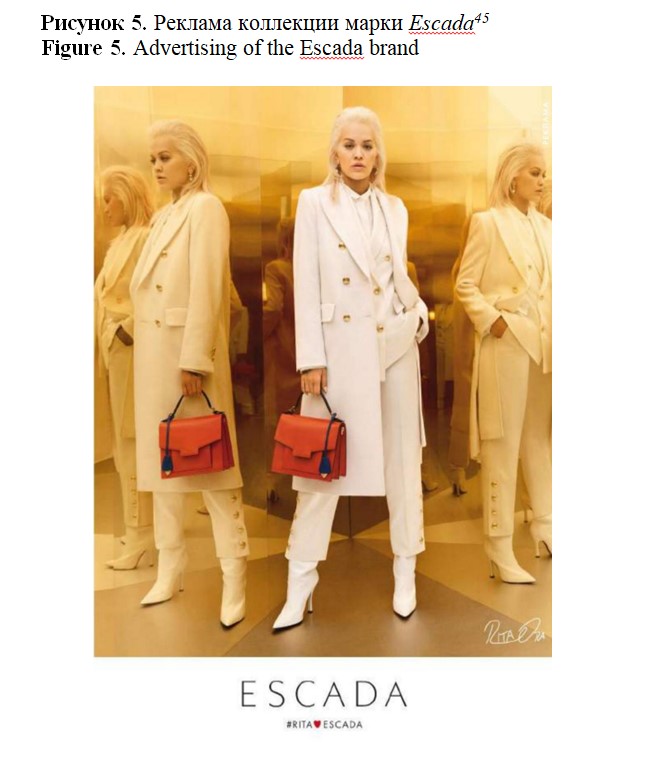
Selemeneva, O. A. (2023). Hashtagging in advertising texts of international glossy magazines, Research Result. Theoretical and Applied Linguistics, 9 (3), 4-25. DOI: 10.18413/2313-8912-2023-9-3-0-1


















While nobody left any comments to this publication.
You can be first.
Atyagina, A. P. (2012). Twitter as a new discursive practice on the Internet, Vestnik Omskogo universiteta, 4, 203–208. (In Russian)
Borodulina, N. Yu., Makeeva, M. N. and Gulyaeva, E. A. (2017). Linguistic means in ensuring the progress of viral advertising, Filologicheskie nauki. Voprosy teorii i praktiki, 9 (75), 87–89. (In Russian)
Galyamina, Yu. E. (2014). The linguistic analysis of Twitter hashtags, in Akhapkina, Ya. E., Rakhilina, E. V. (eds.), Modern Russian on the Internet, Yazyki slavyanskoj kul'tury, Moscow, Russia, 13–22. (In Russian)
Zimina, L. O. (2007). The principle of economy in the language of modern print advertising, Sibirskiy filologicheskiy zhurnal, 3, 174–177. (In Russian)
Il'ina, E. I. (2016). Hashtag as a linguistic phenomenon, Tekstologiya i literaturnoe redaktirovanie, 3 (55), 41–44. (In Russian)
Larionova, M. V. and Demkina, A. V. (2021). Hashtag as a Linguocognitive Unit of Spanish Political Discourse, RUDN Journal of Language Studies, Semiotics and Semantics, 12 (3), 774–788. https://doi.org/10.22363/2313-2299-2021-12-3-774-788 (In Russian)
Latushka, A. P. (2022). Functional types of hashtags (based on Instagram[1] social network), Speech Genres, 1 (33), 58–65. https://doi.org/10.18500/2311-0740-2022-17-1-33-58-65 (In Russian)
Lebedeva, S. F. and Astakhova, N. V. (2019). Hashtag in the language and in the speech: the essence of the problem, Teoriya yazyka i mezhkul'turnaya kommunikatsiya, 1 (32), 103–111. (In Russian)
Leont'eva, A. V. (2009). Peculiarities of Compression of the Means of Expressing Information in the Modern Language: Based on the Material of Electronic Discourse, Abstract of Ph.D. dissertation, Theory of language, Moscow State Regional University, Moscow, Russia. (In Russian)
Navoloka, Yu. S. (2017). The functions of hashtags in the modern Russian advertising (based on the advertising material on the social network INSTAGRAM[2]), Izvestiya Yuzhnogo federalnogo universiteta. Ser. Filologicheskie nauki, 4, 145–153. https://doi.org/10.23683/1995-0640-2017-4-145-153 (In Russian)
Ol'shanskiy, D. V. (2002). Psikhologiya mass [Psychology of the masses], Piter Publ., St. Petersburg, Russia. (In Russian)
Pozhidaeva, E. V. and Karamalak, O. A. (2018). Hashtags in social networks: Intentions and affordances (exemplified in the English language by message groups on the topic “food”), Vestnik Tomskogo Gosudarstvennogo Universiteta, Filologiya, 55, 106–118. https://doi.org/10.17223/19986645/55/8 (In Russian)
Poymanova, O. V. (1997). Semantic space of video verbal text, Abstract of Ph.D. dissertation, Theory of language, Moscow State Linguistic University, Moscow, Russia. (In Russian)
Selemeneva, O. A. (2022). Intertextuality in native advertising of international glossy magazines (of Tatler Magazine), Nauchnyi dialog, 11 (2), 241–256. https://doi.org/10.24224/2227-1295-2022-11-2-239-256 (In Russian)
Skulkin, O. V. and Vorozhbitova, A. A. (2018). Glyantsevyy zhurnalnyy diskurs v Rossii XXI veka: lingvoritoricheskie parametry gender-ideala [Glossy Journal Discourse in Russia in the 21st century: Linguistic and Rhetorical Parameters of the Gender Ideal], Sochi State University Publ., Sochi, Russia. (In Russian)
Yudina, N. V. and Seliverstova, O. A. (2022). Hashtag as a unit of Internet discourse: cognitive and pragmatic perspective, Voprosy kognitivnoi lingvistiki, 3, 108–115. https://doi.org/10.20916/1812-3228-2022-2-108-115 (In Russian)
Yurina, I. A. (2021). Linguistic and extralinguistic properties of viral advertising, Mir nauki, kultury, obrazovaniya, 3 (88), 552–554. (In Russian)
Bernard, A. (2019). Theory of the Hashtag, Polity Press, Cambridge, UK. (In English)
Caleffi, P. (2015). The ‘hashtag’: A new word or a new rule?, SKASE Journal of Theoretical Linguistics, 12 (2), 46–69. (In English)
Daer, A. R., Hoffman, F. R. and Goodman, S. (2014). Rhetorical Functions of Hashtag Forms Across Social Media Applications, Communication Design Quarterly, 3 (1), 12–16. https://doi.org/10.1145/2721882.2721884 (In English)
Karamalak, O., Kalbaska, N. and Cantoni, L. (2021).What do hashtags afford in digital fashion communication? An exploratory study on Gucci-related hashtags on Twitter and Instagram[3], Semiotica, 243 (1), 325–351. https://doi.org/10.1515/sem-2019-0114 (In English)
Kotsakos, D., Sakkos, P., Katakis, I. and Gunopulos, D. (2015). Language agnostic meme-filtering for hashtag-based social network analysis, Social Network Analysis and Mining, 5 (1), 1–14. https://doi.org/10.1007/s13278-015-0271-3 (In English)
Kováčová, D. (2019). Hashtagging on Instagram[4]: Functions of Hashtags as Employed by #Instagirls, Academic Journal of Modern Philology, 8, 129–138. (In English)
Mahfouz, I. (2020). The Linguistic Characteristics and Functions of Hashtags: # Is it a New Language?, Arab World English Journal (AWEJ). Special Issue on CALL, 6, 84–101. https://doi.org/10.24093/awej/call6.6 (In English)
Pérez-Hernández, L. (2018). Building brand narratives with hashtags on Twitter: A cognitive-pragmatic analysis on the emergence of a new advertising subgenre, Pragmatics & Cognition, 2018, 25 (3), 515–542. https://doi.org/10.1075/pc.18020.per (In English)
Potnis, D. and Tahamtan, I. (2021). Hashtags for gatekeeping of information on social media, JASIST, Special Issue: Paradigm Shift in the Field of Information, 72, 1234–1246. https://doi.org/10.1002/asi.24467 (In English)
Ryabchenko, N. A., Katermina, V. V. and Malysheva, O. P. (2019). Political content management: new linguistic units and social practices, Church, Communication and Culture, 14 (3), 305–322. https://doi.org/10.1080/23753234.2019.1664916 (In English)
Stathopoulou, A., Borel, L., Christodoulides, G. and West, D. (2017). Consumer Branded #Hashtag Engagement: Can Creativity in TV Advertising Influence Hashtag Engagement?, Psychology & Marketing, 34, 448–462. https://doi.org/10.1002 / март.20999 (In English)
Vaishali, V. and Rukmini, S. (2021). Hashtags in Linguistic Anthropology: A COVID-19 Case Study, Angles. New Perspectives on the Anglophone world, 12, 1–23. https://doi.org/10.4000/angles.4489 (In English)
Vettorel, P. and Franceschi, V. (2019). English and other languages in Italian advertising, World Englishes and cross‐cultural advertising, 38 (3), 417–434. https://doi.org/10.1111/weng.12432 (In English)
Wetzel, P. J. (2020). Intertextuality in Japanese advertising: The semiotics of shared narrative, Pragmatics and Beyond New Series, 314, 265–281. https://doi.org/10.1075/pbns.314.12wet (In English)
Zappavigna, M. (2012). Discourse of Twitter and Social Media: How We Use Language to Create Affiliation on the Web, Bloomsbury, London, UK. (In English)
Zappavigna, M. (2014). Enacting identity in microblogging through ambient affiliation, Discourse & Communication, 8 (2), 209–228. https://doi.org/10.1177/1750481313510816 (In English).
Zappavigna, M. (2015). Searchable talk: the linguistic function of hashtags, Social Semiotics, 25 (3), 274–291. https://doi.org/10.1080/10350330.2014.996948 (In English)
La Rocca, G. (2020). La fuerza de un signo. Perspectivas teóricas para el análisis de los hashtags, Revista Castellano-Manchega de Ciencias Sociales, 27, 46–61. https://doi.org/10.20932/barataria.v0i27.559 (In Spanish)
Rueda, A. M. and Alamán, A. P. (2015). Syntactic and discursive values of Twitter hashtags [Valores sintáctico-discursivos de las etiquetas en Twitter], Circulo de Linguistica Aplicada a la Comunicacion, 64, 58–83. https://doi.org/10.5209/rev-CLAC.2015.v64.51278 (In Spanish)
[1][2][3][4] Социальная сеть, продукт компании Meta Platforms Inc., которая признана экстремистской организацией и запрещена на территории РФ. Social media service, part of Meta Platforms Inc., added to the register of extremist organisations and banned in the Russian Federation.